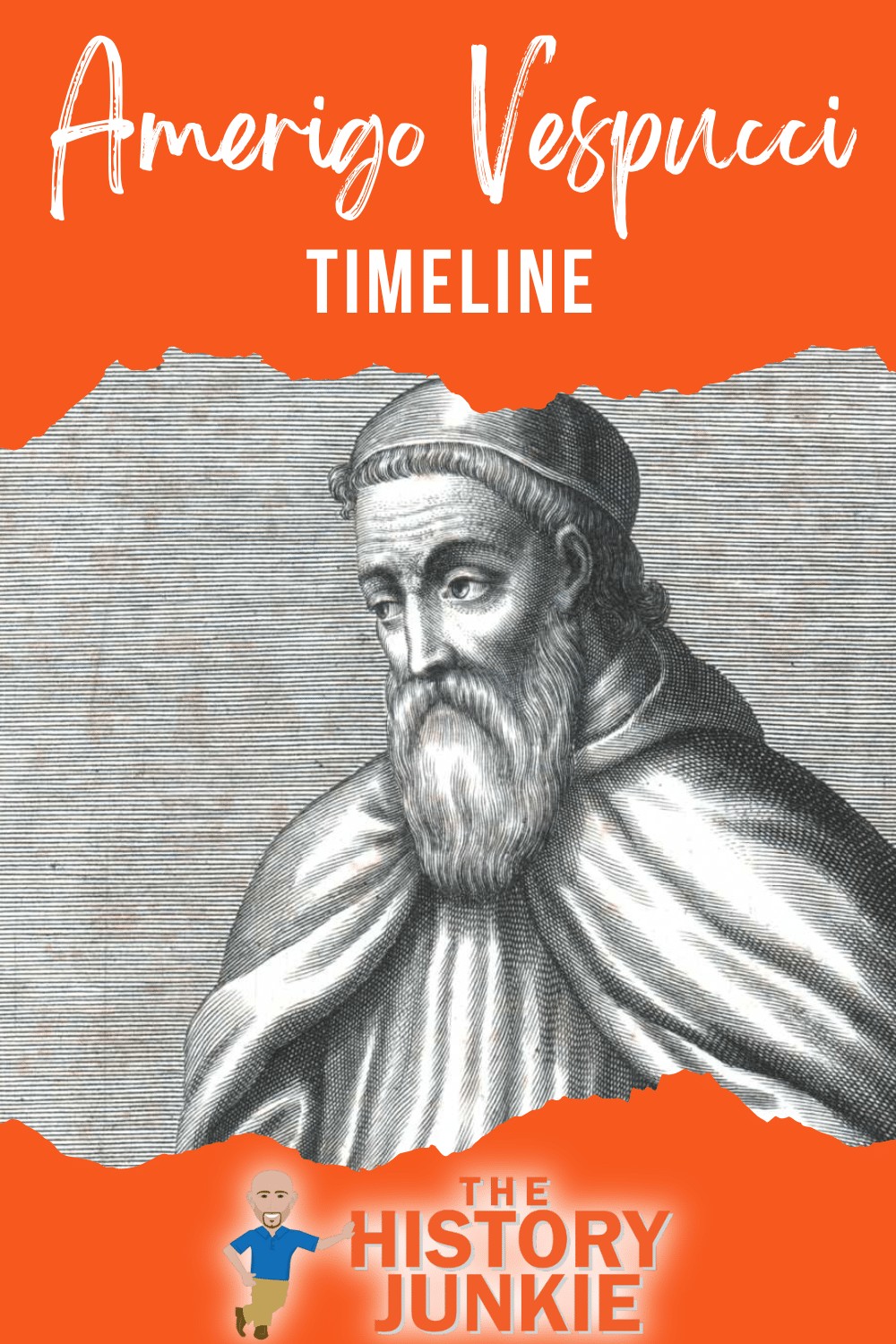Amerigo Vespucci was an Italian merchant and explorer who completed four voyages to the Americas between 1497 and 1504. He was the first European to recognize that these lands were not part of Asia, but a new continent.

His letters describing his voyages helped to popularize the idea of the Americas as a new world, and his name was eventually given to the entire Western Hemisphere.
Vespucci was born in Florence, Italy, in 1454. He studied astronomy and navigation at the University of Florence and then worked as a merchant for the Medici family.
In 1497, he was hired by the King of Spain to participate in an expedition to the Americas. Vespucci's first voyage took him to the coast of South America, where he explored the coastline and made contact with the native people. He returned to Spain in 1499.
Vespucci made three more voyages to the Americas, in 1501-1502, 1503-1504, and 1505-1506.
On these voyages, he explored more of the coast of South America and also visited the Caribbean islands.
Early Life (1451 - 1478)
1451: Amerigo Vespucci into the Vespucci family was a well-known surname that lived and was successful in Florence. He was born at the beginning of the Renaissance, and his family were good friends with the Medici family, who held most of the power within the city. There is a good chance that Amerigo Vespucci would have personally known Leonardo da Vinci during his teenage years.
1465 - 1470s: His older brothers were sent to the University of Pisa for their education, but Amerigo was tutored by his uncle. His uncle happened to be one of the most respected and educated humanist thinkers of that time and taught his nephew all the liberal arts, including astronomy and Latin. This education was key to his development in the upcoming century.
1478: His cousin led a Florentine diplomatic mission to Paris and invited Amerigo Vespucci to join him. Amerigo's role is not clear, but it was likely as an attache or private secretary. Along the way, they had business in Bologna, Milan, and Lyon. Their objective in Paris was to obtain French support for Florence's war with Naples. The mission did not yield many results, but no doubt was an excellent experience for Vespucci.
Early Career (1482 - 1495)
1482: After his father died, he went to work for Lorenzo di Pierfrancesco de Medici, head of the junior branch of the Medici family. Although Amerigo was twelve years older, they had been schoolmates under the tutelage of his uncle. Amerigo served first as a household manager and then gradually took on increasing responsibilities, handling various business dealings for the family both at home and abroad. Meanwhile, he continued to show an interest in geography, at one point buying an expensive map made by the master cartographer Gabriel de Vallseca.
1488: Lorenzo di Pierfrancesco became dissatisfied with his Seville business agent, Tomasso Capponi. He dispatched Vespucci to investigate the situation and provide an assessment of a suggested replacement, Florentine merchant Gianotto Berardi.
1492: Christopher Columbus discovered the New World and sent shockwaves throughout Europe. With a new route being opened, it created more opportunities. At this time, Vespucci had moved from Florence to Seville, where he worked with Gianotto Berardi. It was through Berardi that he became familiar with Christopher Columbus.
1495: Berardi signed a contract with the crown to send 12 resupply ships to Hispaniola but then died unexpectedly in December without completing the terms of the contract. Vespucci was the executor of Berardi's will, collecting debts and paying outstanding obligations for the firm. Afterward, he was left owing 140,000 maravedis. He continued to provision ships bound for the West Indies, but his opportunities were diminishing; Columbus's expeditions were not providing the hoped-for profits, and his patron, Lorenzo di Pierfrancesco Medici, was using other Florentine agents for his business in Seville.
During this time, he married.
Voyages and Later Years (1497 - 1512)
1497 - 1500: According to Amerigo Vespucci, he took two voyages under the Spanish Crown to the New World. These voyages have been disputed as fiction by historians, but they cannot be proven false.
1501 - 1504: Vespucci would sail under the Portuguese Crown during the next two voyages. While the first voyage is not disputed, the second voyage is disputed by some historians. Again, these accusations cannot be proven false, and there are primary sources of Vespucci's that state he was there.
Vespucci realized that he was not in Asia and had instead discovered a new continent on August 17, 1501. He was sailing along the coast of Brazil on his first voyage to the Americas when he noticed that the land did not match the descriptions of Asia that he had read. The rivers were larger, the mountains were higher, and the people were different. Vespucci also noticed that the land extended much further south than Asia was thought to extend.
1505 - 1506: He returned to Seville and served the Spanish Crown. The Spanish monarchy did not mind that he had served Portugal and wanted to know information that could possibly show them a new way to Asia.
1508: He was named chief pilot for the Casa de Contratación or House of Commerce, which served as a central trading house for Spain's overseas possessions. He was paid an annual salary of 50,000 maravedis with an extra 25,000 for expenses. In his new role, Vespucci was responsible for ensuring that ships' pilots were adequately trained and licensed before sailing to the New World.
1512: He died and left his modest estate to his wife and his books to his nephew. His fame would come later, and two continents and a country have his name.
